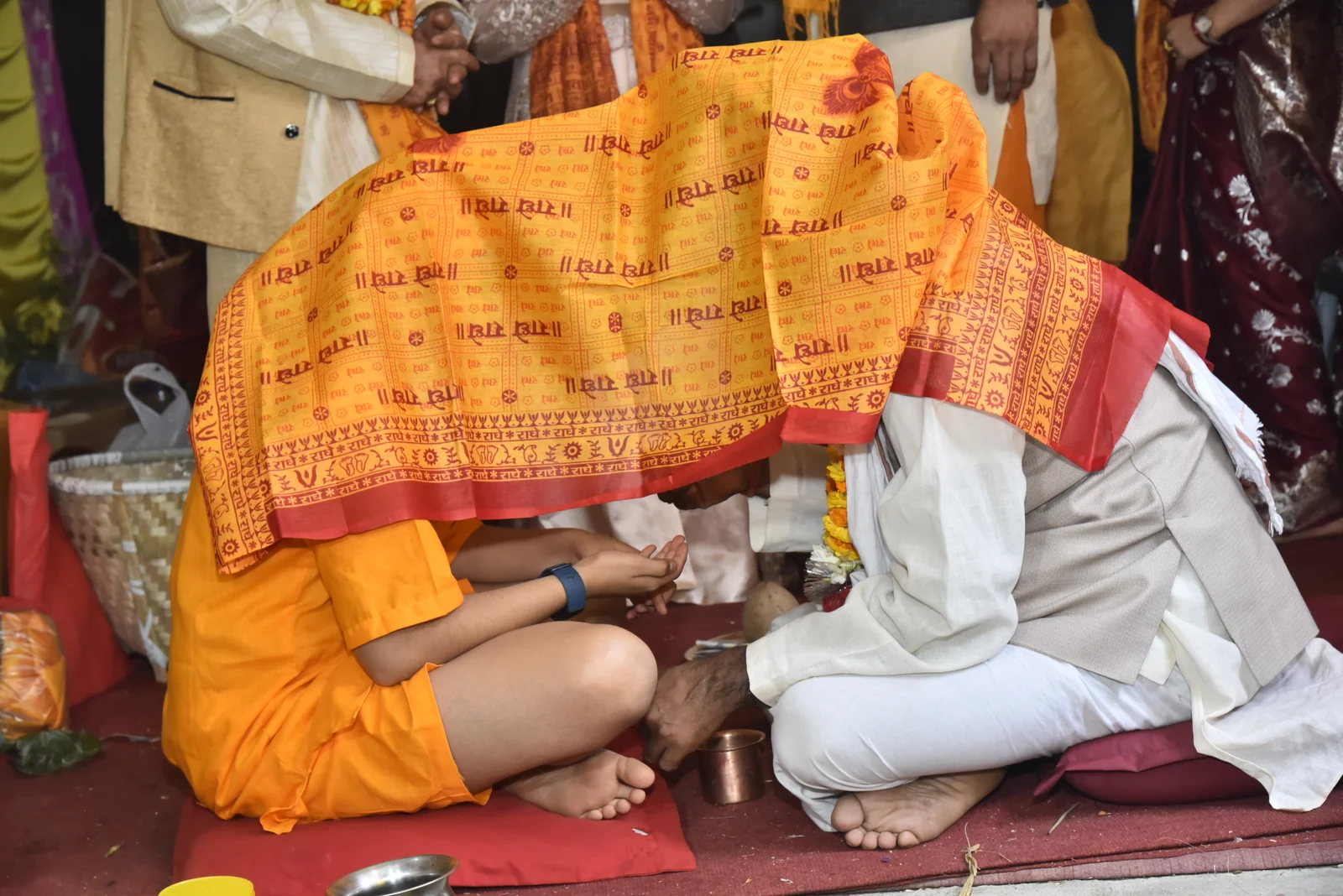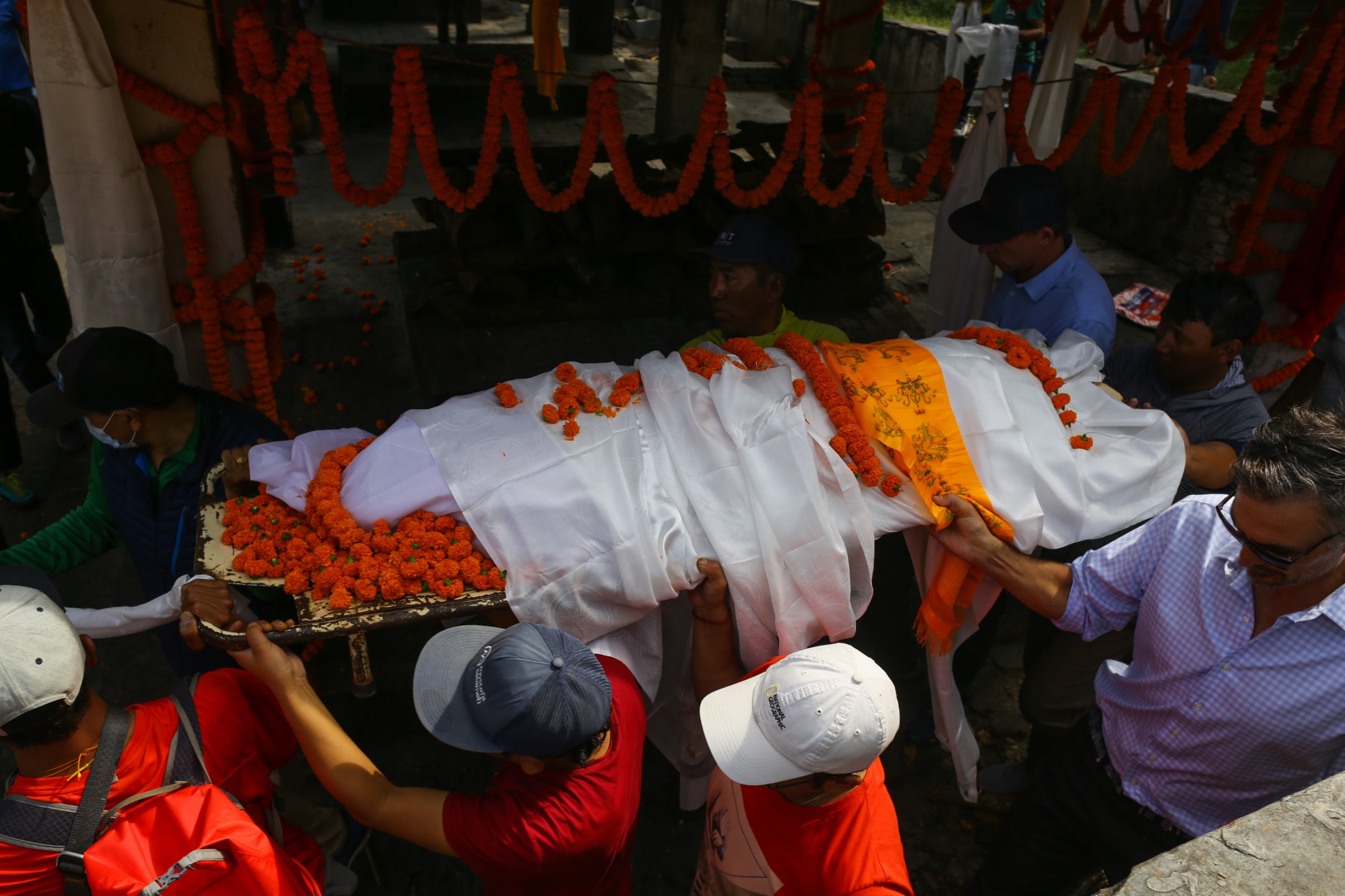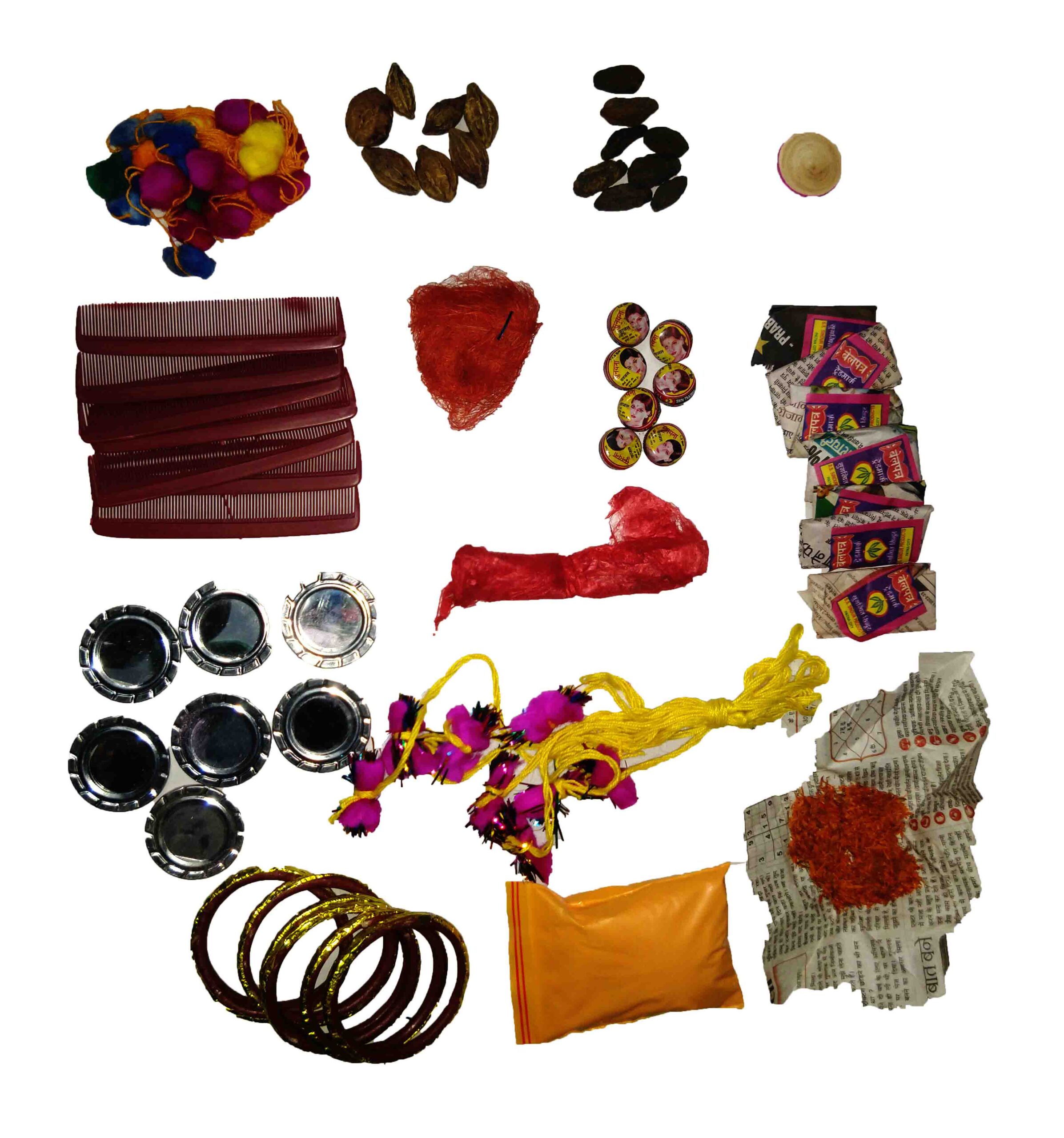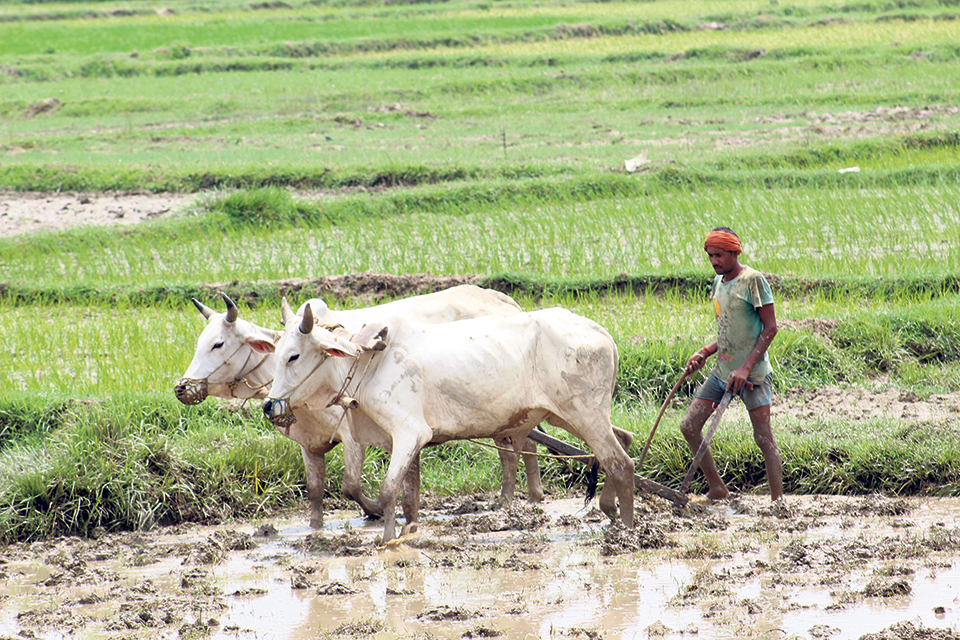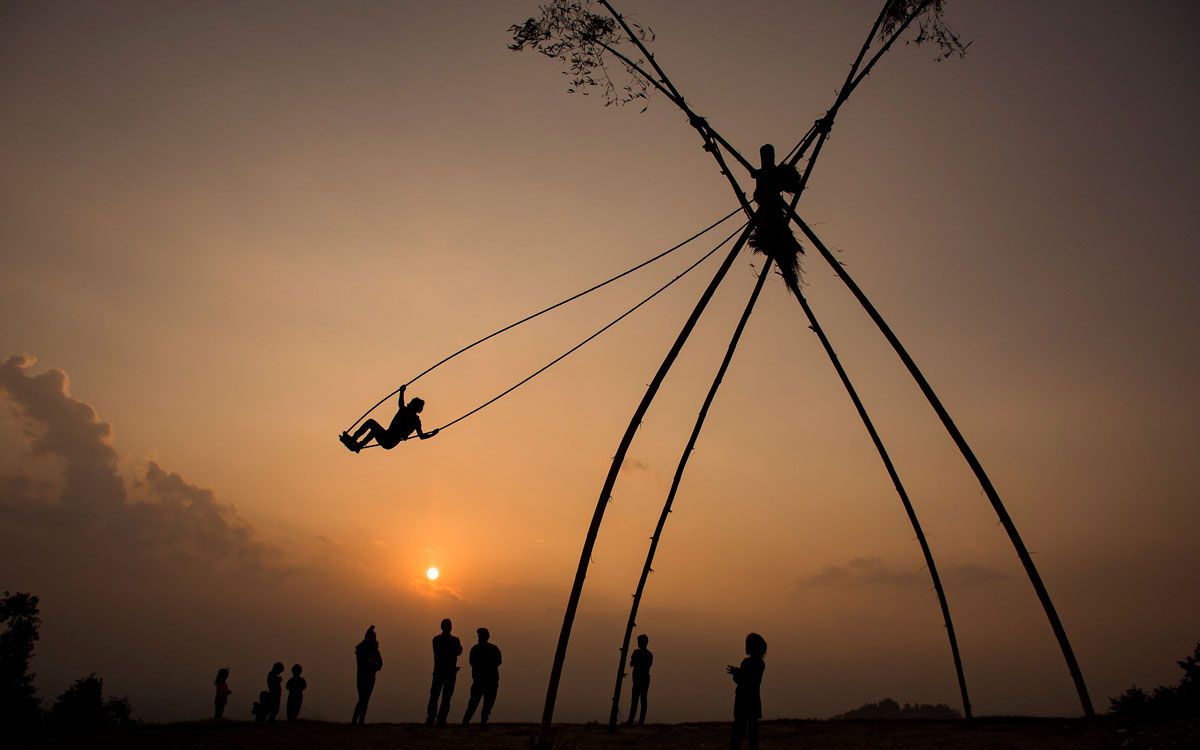Share this Article
Introduction – The Forgotten Rhythm of Mithila’s Monsoon
In the fertile plains of Mithila, where the monsoon paints the earth green and rivers breathe life back into the fields, there exists a festival that hums quietly beneath the surface of modern celebrations — Madhushravani. Once a cherished tradition among Maithil women, especially newly married ones, this festival stands as a poetic dialogue between nature, womanhood, and mythology. It celebrates not only the sacred union of marriage but also the union of earth and sky, of serpents and rain, of fertility and devotion.
Unlike the widely known Chhath or Holi, Madhushravani does not thrive on grandeur or spectacle. It thrives on ritual silence, storytelling, and daily devotion spread over several days during the monsoon month of Shravan. While the rest of the world associates the rainy season with gloom and mud, in Mithila, this time is sacred — it is when the sky pours blessings, crops awaken, and snakes, protectors of the underworld, rise to the surface.
Madhushravani arrives quietly, usually around the time when the air smells of wet soil and the ponds ripple with new life. For generations, it has been the festival of newly married women, marking their first year of marital life. Through ritual fasting, listening to mythological stories, and offering milk to the serpent gods, they seek harmony, prosperity, and understanding in their new homes. It is not merely a festival of religion; it is a festival of adjustment, emotional renewal, and spiritual dialogue between women and the world they inhabit.
As time changes, Madhushravani has slowly faded from urban Mithila, remembered mostly by grandmothers and a few women in rural households. Yet, beneath this fading surface lies a remarkable narrative of ecological wisdom, feminine power, and ancient symbolism that deserves to be rediscovered and retold.
Mythological Origins and the Legend of Madhushravani
Every festival in Mithila carries the fragrance of a story — a tale that ties the divine to the daily, the mythic to the mundane. Madhushravani, too, is rooted in an ancient legend that explains not just the origin of the festival but also its deep connection to snakes, monsoon, and marriage.
The story begins with a young maiden named Mansa, sometimes called the daughter of the great sage Kashyapa and the sister of Vasuki, the serpent king. Mansa, born from the energy of Lord Shiva, was blessed with the ability to control snakes and heal through their venom. She longed for human devotion, but people feared her snake form and stayed away. To earn reverence, she decided to prove her divinity through the story of her most loyal devotee — a woman named Behula.
Behula’s story is the heart of Madhushravani. She was the wife of Lakhandar, the son of a wealthy merchant, Chand Saudagar, who was a staunch devotee of Shiva but refused to worship Mansa. Angered by his arrogance, Mansa cursed his family, causing all his sons to die from snakebite. When Lakhandar too was bitten on the night of his wedding, Behula refused to accept fate. She placed her husband’s lifeless body on a raft and began a long, painful journey on the river, determined to bring him back to life.
Her devotion, patience, and purity of heart moved the gods. Mansa appeared before her, offering a choice — to restore her husband’s life if she promised to spread Mansa’s worship among humans. Behula agreed, and Lakhandar was revived. From then on, the worship of Mansa Devi, the serpent goddess, became part of Mithila’s cultural rhythm. This worship, tied to the rainy month of Shravan when snakes emerge from their burrows, evolved into Madhushravani — a celebration of women’s strength, devotion, and the sacred relationship between humanity and nature’s cycles.
The festival’s name itself holds layers of meaning. “Madhu” means honey, symbolizing sweetness and harmony in relationships, while “Shravani” denotes the monsoon month of Shravan. Together, they reflect the essence of the festival — the sweet bond of marital life, nurtured through the natural rhythm of rain and renewal.
In some regional retellings, Madhushravani is also connected to the divine union of Parvati and Shiva. The snake, as Shiva’s constant companion, represents protection and fertility. When newly married women observe the rituals of Madhushravani, they are believed to invoke Parvati’s blessings for patience, balance, and understanding in their marriage — virtues essential to the success of every household.
Through these myths, Madhushravani binds together three worlds — the spiritual, the ecological, and the emotional. It is not only the story of gods and serpents but also a reflection of the Maithil woman’s life: her journey of adaptation, devotion, and endurance in a new family. The legends serve as metaphors for her growth — just as Behula fought against fate with faith and determination, every woman is reminded of her own quiet power to face the storms of life with grace.
Rituals, Practices, and the Living Traditions of Madhushravani
The festival of Madhushravani unfolds gently over a span of 13 days, though the duration can vary across regions of Mithila. Unlike grand public celebrations, it is an intimate household ritual centered around the courtyard, the kitchen, and the sacred corner where women gather every afternoon. The festival follows a rhythm as natural as the rain itself — slow, continuous, and nurturing.
The participants are primarily newly married women, especially those celebrating their first Shravan after marriage. However, older women also join to guide, recite stories, and pass on traditions to the next generation. Each day carries symbolic actions — simple yet deeply meaningful gestures that blend faith, ecology, and domestic harmony.
The mornings begin with purification. Women bathe early and clean the household spaces. They decorate their doorsteps and walls with alpana — designs made with rice paste — symbolizing purity and fertility. The colors used are natural: red from vermilion, yellow from turmeric, and white from rice flour. These designs, often depicting serpents, lotuses, and flowing vines, act as both prayer and protection.
Every afternoon, the Madhushravani Katha (the legend of Mansa and Behula) is recited. The storytelling is not done by priests but by elderly women, often mothers or grandmothers. Their voices echo in Maithili, carrying generations of oral wisdom. As they narrate, younger women listen with folded hands, absorbing both the moral lessons and the unspoken codes of womanhood. These sessions are communal; women exchange experiences about marriage, relationships, and adjustments in their new homes. Thus, storytelling becomes both spiritual and social therapy.
The ritual offerings are centered around Nag Devta, the serpent god. A clay idol or drawing of a snake is worshipped daily. Milk, dahi, kusha grass, doob (sacred grass), and flowers are offered. Snakes are not feared here; they are honored as guardians of the earth and symbols of fertility and rain. By offering milk to Nag Devta, women express gratitude to nature’s balance — acknowledging that human prosperity depends on harmony with all living beings.
On the twelfth or thirteenth day, the rituals reach their climax. This is known as the Madhushravani Samapan — the conclusion of vows. Women prepare a grand meal with ingredients representing fertility and sweetness: rice, ghee, honey, bananas, and seasonal vegetables. The final story of Behula’s triumph is recited, symbolizing the victory of devotion over fate. Afterward, the newly married woman visits her parental home with gifts and blessings. Her return marks her transformation from a daughter to a matured wife — one who understands her role in sustaining both her household and nature’s rhythm.
The culinary traditions of Madhushravani are equally symbolic. During the festival, women avoid eating salt, onions, and certain spices — a form of purification and restraint. On the final day, they prepare madhu pak (a mixture of honey, curd, ghee, and fruits), which is first offered to the deities and then shared among women. The act of sharing this sweet mixture is not merely ritualistic; it symbolizes unity, forgiveness, and the sweetness necessary for marital harmony.
An essential part of the celebration is sisterhood. Women gather in groups, exchange flowers, sing devotional songs, and visit each other’s homes. These songs, sung in slow, melodic Maithili tunes, carry deep meanings about love, patience, and womanhood. Through these gatherings, young brides form support systems that extend beyond their marital families — a quiet but powerful network of empathy and strength.
Interestingly, the festival also integrates environmental rituals. Many households plant Tulsi (holy basil) and Bel trees during this period, believing they bring purity and prosperity. The festival’s timing during the monsoon season aligns with natural regeneration — the time when the earth renews itself. By linking spiritual practice with ecological care, the women of Mithila preserved a form of sustainable tradition long before the term “environmentalism” existed.
In villages, one can still witness the vibrant yet serene mood of Madhushravani. Women dressed in bright sarees with vermilion dots shining on their foreheads gather under verandas or banyan trees, singing to the rhythm of rainfall. The air smells of wet earth and milk; the sound of temple bells mingles with the croaking of frogs. There is no loud music, no public procession — only quiet devotion and the deep contentment that comes from aligning human life with the cycles of nature.
Through these daily acts, Madhushravani becomes a spiritual rehearsal of balance — between patience and joy, self and family, tradition and change. The rituals teach women that life, like marriage, demands nurturing, endurance, and gratitude. Every story, offering, and song in this festival carries a whisper of ancient wisdom — that true prosperity arises not from dominance over nature, but from harmony with it.
Symbolism and Deeper Meanings — The Feminine, the Serpent, and the Rain
Madhushravani is more than a sequence of rituals; it is a living canvas of symbols, each woven carefully into the everyday life of Maithil women. To understand the festival fully, one must look beyond the surface of offerings and songs, into the rich metaphorical language that defines it. At the heart of this festival lie three central symbols: the feminine, the serpent, and the monsoon rain.
The feminine, represented by newly married women, is central to Madhushravani. Unlike many festivals dominated by male deities or communal spectacle, Madhushravani recognizes the power and endurance of women, especially in the domestic sphere. The festival provides a structured space for women to reflect on their own roles — not merely as wives or daughters-in-law, but as carriers of tradition, moral guidance, and emotional intelligence. Their fasting, storytelling, and nurturing acts are symbolic of patience and creativity, traits that have historically sustained both families and communities in Mithila. Through their participation, women enact a ritual of self-discipline and spiritual empowerment that resonates beyond the household.
The serpent, worshipped as Nag Devta or Mansa Devi, embodies multiple layers of meaning. In the cultural imagination of Mithila, snakes are neither evil nor merely dangerous; they are guardians of fertility, rainfall, and soil vitality. The act of offering milk and prayers to serpents during Madhushravani symbolizes humanity’s recognition of its dependence on natural cycles. Snakes emerge during monsoon when the earth is moist, reminding people of the delicate balance between life and death, abundance and scarcity. The serpent also represents renewal and transformation, mirroring the journey of a newly married woman as she navigates new relationships, responsibilities, and identities.
Rain, or the monsoon, is the third critical symbol. Shravan, the month of Madhushravani, coincides with heavy rainfall in Mithila. Rain nourishes crops, replenishes rivers, and maintains ecological balance. In the context of the festival, rain becomes a metaphor for fertility, renewal, and emotional cleansing. Just as the rains bring life to fields, the rituals of Madhushravani bring spiritual rejuvenation and social harmony. The festival subtly teaches that the prosperity of human life is inextricably linked to the rhythms of the natural world.
The interplay of these three symbols creates a holistic worldview. Madhushravani is not merely a religious exercise; it is an eco-spiritual festival, where human actions, environmental awareness, and spiritual devotion intersect. By fasting, singing, and offering, women acknowledge their interconnectedness with the larger ecosystem. The festival reinforces a subtle ecological literacy — one that recognizes that human well-being depends on respecting natural cycles, maintaining balance, and nurturing relationships, both within the family and with the broader world.
Even in the art, songs, and stories of Madhushravani, symbolism is abundant. The clay idols of snakes, decorated with turmeric and vermilion, are metaphors for life’s hidden energies. The madhu pak shared among women reflects the sweetness of collaboration and emotional reciprocity. The river journey of Behula mirrors the human journey through challenges, reminding participants that devotion, courage, and patience are pathways to transcendence. Each act, while seemingly small, carries a deep, multi-layered message — a message of harmony, resilience, and renewal.
Furthermore, Madhushravani underscores the temporal alignment of human life with nature’s cycles. The monsoon season is a time of pause and reflection; agriculture slows in heavy rains, and households turn inward. The festival mirrors this natural rhythm, creating a cultural space where women can reflect on relationships, domestic duties, and spiritual growth. In this sense, Madhushravani becomes both a mirror and a map: a mirror reflecting the values of Maithil society, and a map guiding women through the intricate terrain of marital and social life.
In a broader sense, Madhushravani illustrates how mythology and ecology are intertwined. The reverence for snakes, the timing of rituals with rainfall, and the ethical lessons embedded in Behula’s story collectively create a worldview where human life is inseparable from natural and divine forces. The festival teaches humility, patience, and respect — values that resonate universally, even beyond the plains of Mithila.
Through these layers of symbolism, Madhushravani stands as a festival that is not just observed but lived. It is a celebration of womanhood, ecological consciousness, and spiritual depth, all woven together in a tapestry of rituals, songs, and stories that have persisted for centuries, despite the march of modernity.
Decline, Modern Challenges, and Efforts to Preserve Madhushravani
As Mithila navigates the currents of modern life, Madhushravani — once a vibrant festival of devotion, storytelling, and ecological awareness — has begun to fade from collective memory. Urbanization, migration, and changing social structures have significantly altered the way Maithil women experience their cultural heritage. In cities, the joint family system, which once supported the intricate rituals of Madhushravani, has largely been replaced by nuclear families. This shift leaves many newly married women without the elder women who traditionally guided the festival’s practices.
Additionally, the fast-paced nature of contemporary life leaves little time for prolonged rituals, storytelling, and community gatherings. Young women, working outside the home or pursuing higher education, often lack both the time and the cultural context to participate fully. Moreover, commercialization and the influence of mainstream Indian festivals like Diwali, Holi, and Raksha Bandhan have overshadowed regional traditions, pushing Madhushravani further into obscurity.
The decline is also linked to loss of oral knowledge. The festival’s songs, myths, and rituals have historically been passed down by word of mouth from mother to daughter or grandmother to granddaughter. With younger generations increasingly disconnected from these oral traditions, critical aspects of the festival risk being forgotten. Without documentation, the subtle lessons embedded in the stories of Behula, the symbolism of the serpent, and the ecological teachings of the monsoon season may vanish within a generation.
Despite these challenges, efforts to preserve Madhushravani are emerging, often led by local cultural organizations, academics, and passionate women’s groups. Scholars of Maithili culture are beginning to document the festival, recording its songs, narratives, and rituals in books, digital media, and academic journals. Workshops in villages and schools aim to teach young girls the traditional songs, the proper rituals, and the symbolic meanings of each practice. Through these initiatives, elders are being encouraged to actively share their knowledge before it disappears.
Social media and cultural blogs are also playing an unexpected role. By sharing videos of rituals, photographs of traditional alpana designs, and stories of Behula’s devotion, these platforms reach audiences far beyond Mithila’s geographic boundaries. Urban Maithil women, many of whom live in Delhi, Patna, or Kathmandu, are reconnecting with Madhushravani through digital storytelling, virtual celebrations, and community groups. Such initiatives not only preserve the festival but also adapt it to contemporary contexts without losing its essence.
Some NGOs and cultural organizations have begun to revive the festival as a tool for ecological education and women’s empowerment. By highlighting the links between ritual and environment — such as snake conservation, planting Tulsi, and understanding monsoon cycles — these programs showcase Madhushravani as more than a religious tradition; it becomes a living model of sustainable, culturally rooted practice. Young women are encouraged to see themselves not only as participants in rituals but also as custodians of heritage, ecology, and social harmony.
While challenges remain, these preservation efforts demonstrate that Madhushravani is not destined for oblivion. On the contrary, by combining documentation, digital outreach, and local advocacy, the festival can find new life among younger generations. Its revival offers more than nostalgia; it provides a template for cultural resilience, teaching the values of patience, devotion, ecological awareness, and community — lessons that are increasingly relevant in a world grappling with environmental and social change.
In essence, Madhushravani’s decline is not merely a loss of ritual but a signal of the broader cultural transformation underway in Mithila. Yet, the festival’s survival depends on the conscious effort to bridge generations, document oral traditions, and adapt celebrations to modern realities while maintaining their symbolic depth. The stories, rituals, and ecological wisdom of Madhushravani are too precious to be lost, for they carry the very essence of Maithil identity, creativity, and spiritual life.
Conclusion — Rediscovering Madhushravani and Its Relevance Today
Madhushravani, though quietly fading from the public consciousness, remains one of Mithila’s most profound cultural treasures. It is a festival that celebrates women, nature, and the delicate balance of life in a way that is both intimate and universal. Through the devotion of newly married women, the symbolism of serpents, and the rhythm of the monsoon, Madhushravani conveys lessons that extend far beyond ritual: patience, harmony, resilience, and the interconnectedness of human and ecological life.
In a rapidly modernizing Mithila, rediscovering Madhushravani offers a unique opportunity to reconnect with cultural roots. The festival teaches that spirituality is not merely a matter of grand temples or elaborate ceremonies but can be found in simple, mindful acts — a story shared under the veranda, milk offered to a clay snake idol, or a communal meal prepared with devotion. These small gestures reflect values that are timeless, encouraging reflection, empathy, and respect for the natural world.
Moreover, Madhushravani serves as a reminder of the power of women’s collective wisdom. By centering women in its rituals, songs, and stories, the festival honors their role as custodians of culture, knowledge, and domestic harmony. The narratives of Behula and Mansa Devi continue to inspire courage, determination, and faith, showing that the feminine voice has always been a cornerstone of Mithila’s spiritual and social life.
The ecological wisdom embedded in Madhushravani is equally significant today. In honoring the monsoon and revering the serpent, the festival teaches a subtle form of environmental stewardship, reminding us that prosperity depends on respecting the cycles of nature. In this light, Madhushravani is not merely a relic of the past but a blueprint for sustainable living, harmonizing human activity with the rhythms of the earth.
For modern readers and cultural enthusiasts, the festival offers both inspiration and a call to action. Preserving Madhushravani requires conscious effort: documenting oral histories, teaching younger generations, and adapting rituals to contemporary life without losing their essence. By doing so, Mithila can ensure that this extraordinary festival continues to thrive, not as a museum piece but as a living tradition, vibrant, relevant, and transformative.
In rediscovering Madhushravani, we uncover more than a festival; we rediscover a way of life, a philosophy rooted in devotion, ecological awareness, and human resilience. It is a celebration that reminds us of the sweetness of patience, the depth of devotion, and the interconnectedness of all living beings. As the rains fall over the plains of Mithila and the songs of women echo in the air, Madhushravani endures — a quiet, profound testimony to the enduring spirit of Maithil culture.
Categories:
Culture & Traditions
Tags:
Madhushravani


